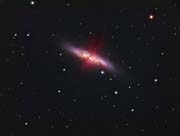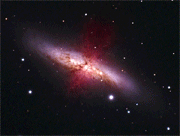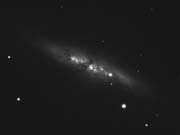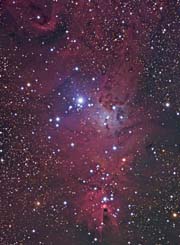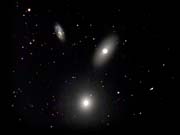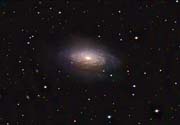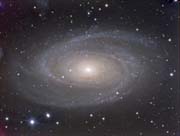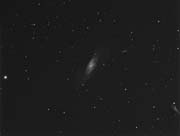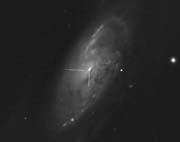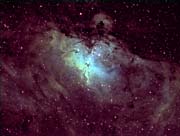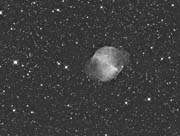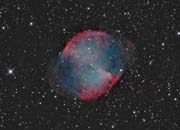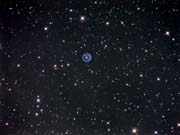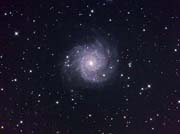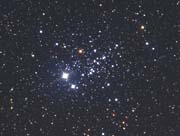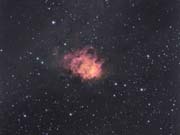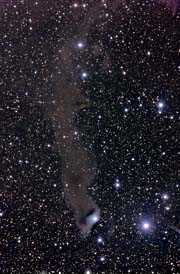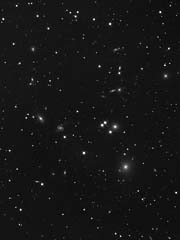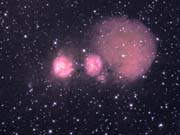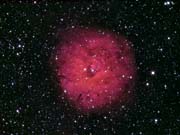In January 2014 a supernova appeared in the bright nearby (11 million Light Years) galaxy Messier 82. soon classified as a type 1A, and named Supernova 2014J. I first heard about it on 22nd January and determined to image it. As always click on the thumbnails for a larger image. This image featured in the article on this Supernova in the March 2014 Astronomy Now magazine, and also appeared in the April and May 2014 issues.
As luck would have it, 23rd January was the first clear night for a long time, and of course I was out for dinner with friends I haven't seen for some time. Typical! However I managed 3 subs before going out and another 8 on return. Only monochrome subs - the clouds rolled in around midnight, so I used the colour from a previous image which I also used for the animation. Large image
The new image was 11 x 5 minute subs. QSI 683 on Meade 12" at 2600 mm. The supernova measured at magnitude 11.3
The monochrome image is a crop from the calibrated but only linear stretched combined frames showing the true magnitude of the supernova relative to the galaxy. Pretty bright!
